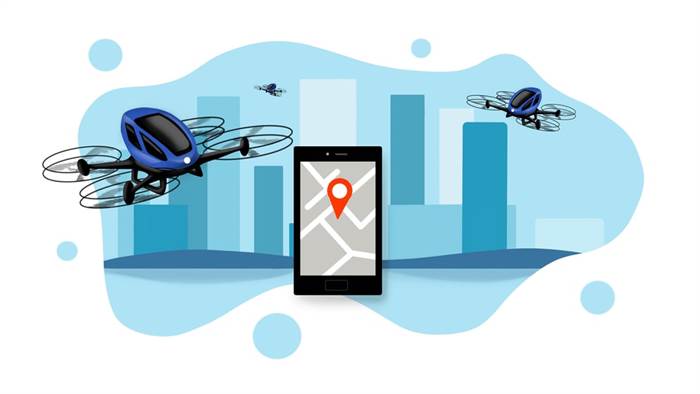Content
- Buy Now Pay Later Report: Market trends in the ecommerce financing, consumer credit, and BNPL industry
- What is a Transformation Management Office TMO, and why your organization needs one?
- What is Banking as a Platform?
- LATEST ARTICLES
- Banking as a Service vs. Banking as a Platform
- Multi-currency IBAN for cross-border payments
- Innovation
- What about Software as a Service?
The company has been funded through debt and venture capital rounds with notable investors such as Visa and is seeking to raise an additional $100 million in financing in 2022. BaaS startups are able to challenge traditional banking models by providing customers with more cost-effective, transparent, and accessible financial services. Convenience, speed, and a wide selection of payment options are only some of the perks that BaaS platforms provide to the consumer experience. Never in history have buyers been equipped with more fintech tools for transaction and payments solutions. The end-user is able to receive more and more information and therefore are becoming empowered clients who demand integrated and direct experiences with the services or products they consume. As its primary solution, BaaS has evolved to become a valuable and crucial new frontier in financial services.

In the simplest terms, open banking is a framework that gives end users the power to take control of their own financial data. That access means they also have the ability to share their data however they want with third parties, which opens the door for embedders to offer new features and financial services that wouldn’t otherwise be possible. Open banking provides the power to access and analyse the data in a customer’s financial account and the means to initiate payments from that account on behalf of the customer. If you’re building any kind of financial product you’ve likely heard of ‘open banking’. In the last few years, it’s seen a huge increase in support from the finance industry – especially as new regulation in Europe has pushed traditional financial institutions to embrace adoption. And the more open banking is explored, the more its place in the toolset needed to power to shape embedded finance is coming into focus.
Buy Now Pay Later Report: Market trends in the ecommerce financing, consumer credit, and BNPL industry
She is a former CFO for fast-growing tech companies and has Deloitte audit experience. Barbara has an MBA degree from The University of Texas and an active CPA license. When she’s not writing, Barbara likes to research public companies and play social games including Texas hold ‘em poker, bridge, and Mah Jongg. Part three looks at how banks and fintech companies can enable BaaS at scale. Providers and distributors of BaaS, such as banks and financial technology companies, can benefit from finer distinctions to better avail of the opportunities BaaS brings.
Bank customers receive more innovative services from their bank, developed by the fintech companies. For example, imagine a bank adding a chatbot into their app to enhance their investment services. The chatbot https://globalcloudteam.com/ is developed by an outside fintech company yet offered directly through the bank. Allows Fintechs to offer a range of financial services to their customers without having to obtain a banking licence.
What is a Transformation Management Office TMO, and why your organization needs one?
Acquiring APIs take care of online and POS terminal acquiring, electronic payment systems, mobile/NFC payments, etc. Plug & Play APIs are ready-made modules that are compatible with any platform out of the box and include solutions for trading, oAuth, fraud monitoring, white-label banking, user interface, and more. These APIs provide a technical approach that creates a competitive advantage over more traditional financial institutions in a market where novel fintech startups emerge constantly. Banking-as-a-Service is an ecosystem of licensed financial institutions providing access to their embedded financial services to non-banking partners, generally through the use of APIs. To have a complete BaaS system, Licensed banks, BaaS providers, and Brands/Fintechs work together and connect in a symbiotic relationship to provide customers with the best possible products and services. An FDIC-insured bank lends its license to a BaaS provider and grants access to its financial products.

Across industries, digital transformation is democratizing data to enable greater transparency and better customer experiences. New technologies are opening up legacy systems to emerging startups and third parties and, in some cases, putting data directly in the hands of consumers. To consumers, BaaS makes fintech firms look pretty similar to a bank, with the differences being hard to detect without reviewing one of their contracts or looking at the fine print on the website. If consumers like what banking as a service platform a fintech lender has to offer, they can do all applications, agreements, and bill payments through that app seamlessly with no obvious indication that they aren’t actually the ones providing the service. While both provide user access to a financial institution’s platform, there are significant differences regarding what they share and how they do so. This separates these two technologies completely, and it is important to understand the differences between banking as a service vs. open banking.
What is Banking as a Platform?
This allows them to offer their customers financial products and services, such as payments, lending, and account management, without having to invest in and maintain their banking infrastructure. As fintech companies became known for lower friction and an enhanced customer experience, financial institutions and companies from other industries began exploring how to offer financial services virtually. Regional banks and credit unions found it hard to keep their main depositors and offer similar services because of product silos, infrastructure that was built decades ago, and traditional business models.
Drive your fintech digital innovation to cross border, seamless banking and payments. The services provided by a traditional bank can now be provided, with the help of online payment technologies, to companies who can work as a bank. Tech-savvy legacy banks can fend off the encroaching threat of fintechs by moving into the BaaS space to share their data and infrastructure. Banking-as-a-Service platforms provide more financial transparency options by letting banks open up their APIs for third parties to develop new services. With open banking, a third party is able to gain access to the information and credentials of a bank’s customers. This allows a fintech or other third party to provide a few limited functions from that bank that rely on the information being shared .
LATEST ARTICLES
With these tailored financial services, platforms become a one-stop destination, enabling customers to manage all aspects of their business in a single place. The two models often get confused, as open banking also involves banks connecting to non-banks via API. In BaaS models, non-bank businesses integrate complete banking services into their own products. In open banking models on the other hand, non-bank businesses merely use the bank’s data for their products. In the industry, these non-bank businesses are called third party service providers . APIs are changing the banking world by enabling innovation, access, affordability and collaboration—all of which are imperative to compete in this new age.
This end-to-end process allows 3rd parties to connect to financial services and uplift the bank’s core banking systems, building their own banking offerings on top. Software as a Service is based on the same logic as Banking as a Service, but not necessarily focused on providing a banking service. Open banking refers to the practice of allowing third-party companies to access a bank’s customer data and account information through the use of Application Programming Interfaces . This enables customers to share their financial data with authorized third-party providers, such as fintech companies and other financial institutions, in order to access new and improved financial products and services.
Banking as a Service vs. Banking as a Platform
Such regulations, in the past, hindered innovation in the way the customers were served. BaaS allows you to choose the options you need, providing a quick, inexpensive, and efficient entry for banking operations. I upload her story and illustration to Google Classroom for her teacher to review, and then I get back to my work. And I’m a colleague that’s always there to help out when she needs some clarification.
- It is important for bank executives to take advantage of their position and enter the BaaS market now before they fall behind.
- In order to aggregate the information, the app needs to draw transactional data from all of your bank accounts.
- Upgrades and maintenance of these systems are costly and every change requires a lot of bureaucracy and testing due to the high risk that it implies.
- The company has established strategic partnerships with several well-known brands, including Uber, Uber Eats, and DoorDash, to serve as their card-issuing partner.
- The BaaS model creates revenue streams and enables customer sharing for the participants.


